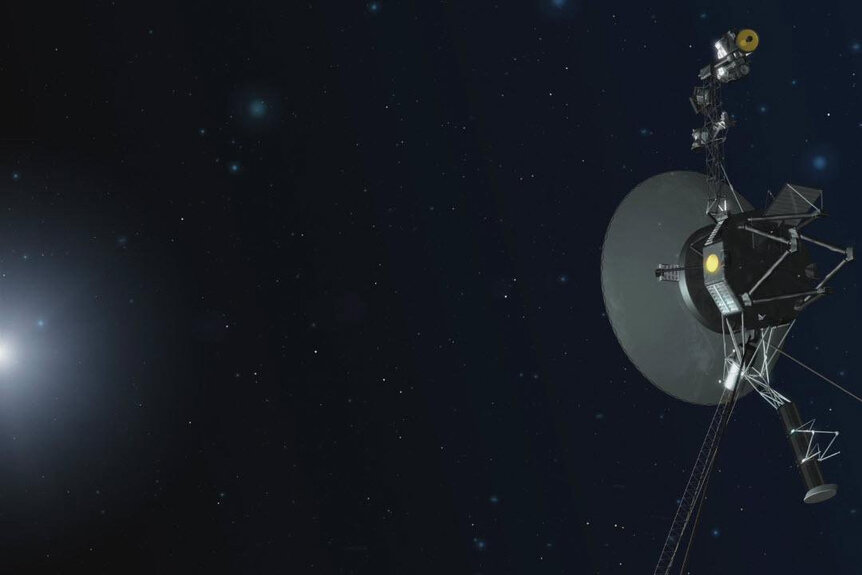Create a free profile to get unlimited access to exclusive videos, sweepstakes, and more!
Why Did Voyager 1 Just Start Transmitting Gibberish from Deep Space?
Sometimes, when a spacecraft gets older, they don't communicate so good.
Harry Vanderspeigle (Alan Tudyk) is the titular extraterrestrial of Resident Alien (streaming now on Peacock) and he’s all alone (aside from a couple notable exceptions) on our planet. In the Season 2 episode “Radio Harry,” he attempts to send a message to his people, by way of a transmitter we know as the interstellar rock ‘Oumuamua, telling them not to destroy humanity… for 50 years. We’ll take a few decades of buffer between now and extermination, but calling it off would be better!
Speaking of weird signals to and from deep space, scientists at NASA recently began receiving a bunch of binary gibberish from Voyager 1, and it isn’t clear why.
Voyager 1 Is Firing Off Nonsense, and It Won’t Stop
We haven’t intercepted a stray extraterrestrial message (probably) but something weird is going on; here’s what we know. Both Voyager spacecrafts have three onboard computers known as the flight data system (FDS).
RELATED: 'Oumuamua: Resident Alien's radio receiver isn't alien tech, but it is awesome!
The FDS is responsible for gathering information from its respective craft’s scientific instruments along with health data about the craft itself. Then it packages all of that information together and sends that package to another system called the telemetry modulation unit (TMU), which sends it back to Earth. For reasons unknown, something is going wrong with the handoff.
Rather than the usual science and spacecraft data it usually sends, the TMU has been transmitting a repeating string of ones and zeroes. That bit isn’t unusual, all information sent back by Voyager 1 and 2 comes in binary form, it’s just that the contents of the binary don’t make any sense. According to NASA, “after ruling out other possibilities, the Voyager team determined the source of the issue is the FDS.” No word on if those “other possibilities” included picking up some weird alien gibberish on an extraterrestrial radio band or something.
The team has attempted restarting the FDS by essentially turning it off and back on again – that fixes most technological problems here on Earth – but the problem persisted when the system was turned back on. The Voyager team continues to search for a solution, but it’s not surprising that the craft is showing its age.
Voyager 1 and 2 have been cutting through space at breakneck speed since 1977. They’ve visited the most distant parts of our solar system and traveled beyond it. They are the longest running spacecraft still in operation, in the history of space exploration, and they are increasingly held together with the cosmic equivalent of duct tape, chewing gum, and hope.
RELATED: The Life and Eventual Death of Voyager 1 and 2
Even the radioactive heart of Voyager is weakened and getting weaker every day. At Voyager 1’s great distance it can’t rely on energy from the Sun, so it uses the heat of decaying plutonium to power its systems. Even with a half-life of 88 years, the radioactive fuel has undergone significant decay over the last half-century and Voyager has lost a lot of its power output.
The Voyager team is pulling out all the stops to get our interstellar buddy back up and running, but it’s a tough job. The spacecraft was built by folks who have long-since retired and the current team can’t exactly ask for their help. There is also considerable light-speed lag between Voyager and the Earth.
From its interstellar vantage point, it takes nearly a day for light to cross the distance. So, every time the team tries something, it’s a 45-hour round-trip wait for the signal to get there and a response to get back.
With any luck, the Voyager team will be able to nurse our oldest and most distant space robot back to health soon. And if any aliens want to drop us a line, we’re not doing anything.
Maybe they want to hang out and watch Resident Alien, streaming now on Peacock. We have popcorn.



































